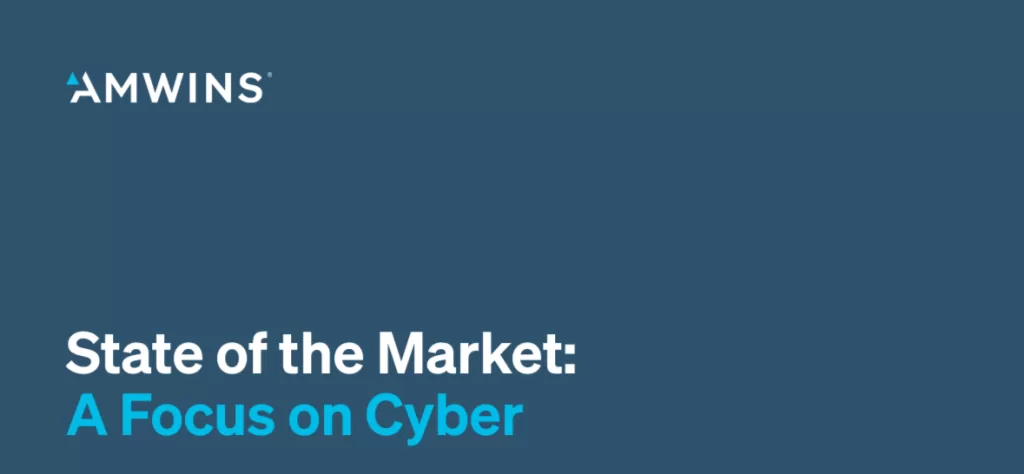There is no shortage of reports on the cyber insurance market, but their value is undeniable, given the dynamic, persistent, and growing nature of cyber threats. With cyber risks constantly evolving, staying up to speed on cyber insurance market trends has never been more crucial.
The latest State of the Market report from Amwins, a leading distributor of specialty insurance products, offers an analysis of current market trends, equipping brokers and clients with insights to navigate the complexities of the cyber insurance landscape. The analysis highlights a substantial softening in the market since early 2023, a shift characterized by favorable pricing conditions, expanded underwriting appetites, and improved terms.
“Our State of the Market report goes beyond just outlining current conditions – it serves as a strategic resource for brokers to leverage when securing optimal solutions for their clients,” said Matt Donovan, Executive Vice President at Amwins Brokerage. “By staying ahead of emerging trends and deeply understanding evolving risks, brokers are equipped to provide informed, forward-thinking advice in this rapidly changing market.”
Our further analysis follows; you can read the full report here.

Market Softening Benefits Buyers
The cyber insurance market has significantly shifted, softening since early 2023. Unlike other segments entrenched in a hard market, cyber insurance renewals are now coming in at or below expiring pricing levels, even with rising claims activity. Improved capacity from new market entrants and existing carriers has played a critical role in driving this trend, with some carriers now offering limits of up to $10 million. These market trends indicate potential benefits for buyers.
Insurers have broadened their underwriting appetites and are now more willing to consider high-risk sectors such as casinos, fintech, and cryptocurrencies. At the same time, municipalities continue to face challenges due to inadequate cyber controls. However, the softened market has allowed brokers to secure more competitive terms even in these complex sectors, reflecting ongoing cyber insurance market trends.
Improved Terms and Coverage Enhancements
As competition in the market intensifies, insurers are eliminating sublimits and coinsurance, particularly on ransomware coverage. Additionally, higher sub-limits are available for cybercrime, including social engineering and invoice manipulation. Amwins reports that some carriers are expanding coverage to include non-IT-dependent business interruption and system failures, reflecting an evolving approach to underwriting in response to new risks and illustrating key cyber insurance market trends.
However, the report warns that the market is not without its complexities. Brokers must be aware of increasingly restrictive endorsements and exclusions, such as reimbursement language for ransomware claims, exclusions for unsupported software, overly broad war exclusions, and lengthy waiting periods for business income loss claims related to system failures.
Persistent Ransomware Concerns
Ransomware continues to dominate the cyber threat landscape, which is marked by severe demands and unpredictable targeting. Despite a decrease in ransom payments, the frequency of attacks remains high. This trend has prompted a shift towards stronger multifactor authentication (MFA) controls and enhanced cyber resilience strategies.
“Cyber insurance is now an essential component of comprehensive risk management, and insureds are wise to understand the scope of coverage,” Donovan emphasized. “Early communication to the carrier and breach response vendors greatly improves both the severity and recovery time resulting from an event.”
Emerging Legal and Coverage Issues
The report also identifies several emerging legal and coverage issues. Class action lawsuits concerning illegal surveillance, pixel tracking, biometric privacy violations, and other privacy-related claims are on the rise. Some insurers have responded by excluding these claims or setting sublimits for coverage. As the market evolves, these exclusions and limitations are expected to become more prevalent.
Amwins also highlights a growing focus on non-IT-dependent business interruption coverage. While this coverage is now more widely available, its scope and limits vary significantly across the market, leading to potential confusion for buyers. Retail agents are encouraged to continue educating clients about these nuances and ensure comprehensive protection against potential losses.
Market Outlook
Looking ahead, Amwins expects the cyber insurance market to remain soft, particularly for small- to mid-size businesses, as underwriting and processing efficiencies improve. However, potential risks loom for larger accounts and specific vendors, especially those dependent on major technology providers like Microsoft Azure, Google Cloud, and CrowdStrike. These predictions are crucial for understanding future cyber insurance market trends.
As the cyber insurance landscape continues to change, staying informed and agile will be essential for brokers and insureds alike.
Source: Amwins Releases State of the Market Report: A Focus on Cyber.
Other News: City of Columbus Sues Researcher After Ransomware Attack.
Other News: Cyber Insurance Market Skyrockets to $116.7 Billion by 2032(Opens in a new browser tab)